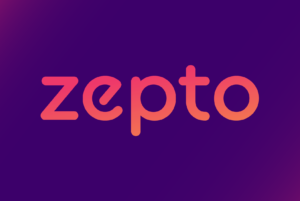Zepto: The Success Story of India’s 10-Minute Delivery Giant
In the ever-evolving landscape of e-commerce and quick commerce, one company has rapidly made a name for itself: Zepto. Founded in 2021 by two Stanford dropouts, Zepto revolutionized the grocery delivery space in India by promising ultra-fast 10-minute deliveries. In just a short span, the company has grown into a billion-dollar enterprise, redefining consumer convenience and setting a benchmark for the quick commerce industry.
The Genesis of Zepto
Zepto was founded by Aadit Palicha and Kaivalya Vohra, two young entrepreneurs who saw a major gap in India’s grocery delivery ecosystem. During the COVID-19 pandemic, they realized that existing grocery delivery services were too slow and inefficient. With increasing consumer demand for instant gratification, they envisioned a platform that could deliver essentials within minutes.
The duo initially experimented with different models before settling on an ultra-fast delivery service, leveraging micro-fulfillment centers (MFCs) to ensure rapid dispatch and delivery. Their unique approach quickly gained traction, attracting investors and early adopters.
The Quick Commerce Revolution
Zepto operates in the quick commerce (Q-commerce) sector, which focuses on delivering essentials at lightning speed. Unlike traditional e-commerce, where deliveries take hours or days, Zepto promises a 10-minute turnaround by strategically placing dark stores—small, high-efficiency warehouses—in high-demand areas.
This hyperlocal fulfillment model allows Zepto to optimize logistics, reduce delivery costs, and ensure maximum efficiency. The company employs AI-driven inventory management systems to predict demand and stock accordingly, ensuring customers always find what they need.
Funding and Growth
Despite launching in a highly competitive market, Zepto managed to secure significant funding from top investors. By mid-2022, it had raised over $200 million, and in 2023, the company achieved unicorn status, crossing the $1 billion valuation mark.
Investors were drawn to Zepto’s ability to scale rapidly while maintaining operational efficiency. Unlike many startups that burn through cash without profitability, Zepto’s unit economics were strong from the outset. Their blend of technology, logistics expertise, and consumer demand created an attractive business model.
Challenges and Competition
Zepto faced stiff competition from established players like Swiggy Instamart, Blinkit (formerly Grofers), and Dunzo. These companies had significant resources and market presence, but Zepto differentiated itself with its superior speed and fulfillment strategy.
Regulatory challenges, supply chain disruptions, and operational scaling were other hurdles Zepto had to navigate. However, by focusing on execution, maintaining tight delivery SLAs (Service Level Agreements), and continuously optimizing its tech stack, Zepto managed to outpace many competitors.
The Technology Behind Zepto’s Success
Zepto’s success can be attributed to its deep reliance on technology. The company uses AI and machine learning to:
- Optimize delivery routes
- Manage warehouse inventory in real-time
- Predict consumer demand trends
- Reduce order processing time
Their tech-enabled approach ensures that delivery partners receive the shortest and fastest routes, reducing overall turnaround time and enhancing customer satisfaction.
Expansion and Market Penetration
Starting in major metro cities like Mumbai, Bangalore, and Delhi, Zepto gradually expanded into Tier-2 cities. The demand for ultra-fast delivery wasn’t just limited to metropolitan areas—smaller cities also embraced the convenience of quick commerce.
Zepto’s marketing strategy revolved around hyperlocal targeting, social media promotions, and referral incentives. By integrating its services with payment apps and other platforms, the brand gained rapid traction.
The Road Ahead: What’s Next for Zepto?
With a solid foundation and a proven business model, Zepto continues to expand aggressively. The company is exploring new categories beyond groceries, including pharmaceuticals, pet supplies, and household essentials.
Zepto is also investing in sustainability by optimizing packaging and reducing delivery carbon footprints. The company aims to integrate electric vehicles into its logistics fleet and partner with eco-friendly brands to make quick commerce more sustainable.
Additionally, international expansion could be on the horizon. Countries with high population density and demand for ultra-fast delivery services could be potential markets for Zepto’s business model.
Conclusion
Zepto’s meteoric rise showcases the power of innovation, speed, and consumer-first thinking. By tapping into the need for instant grocery delivery, leveraging advanced technology, and focusing on operational efficiency, Zepto has carved a unique space in India’s e-commerce landscape.
As the company continues to grow, it remains a fascinating example of how disruptive ideas, backed by strong execution, can lead to massive success. The future of quick commerce is bright, and Zepto is well-positioned to lead the charge.

1 thought on “Zepto success story”